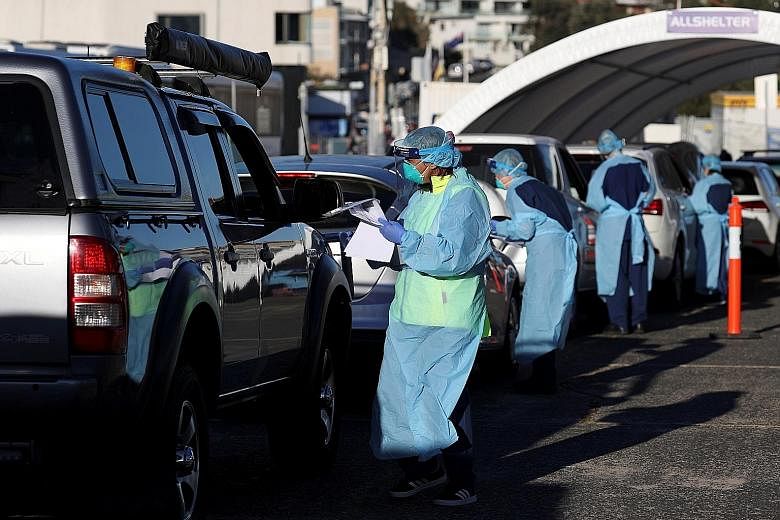Australia came tantalisingly close to eliminating its Covid-19 outbreak last month, but is now reimposing restrictions as it battles outbreaks in its two largest cities.
The experience has created a fierce divide in Australia over whether to try to suppress or eliminate the virus.
The federal government insists on "aggressive suppression", saying that elimination is too costly and would lead to hundreds of thousands of extra job losses.
Prime Minister Scott Morrison said an elimination strategy is also potentially more dangerous because it can lead to a false sense of security about the ongoing risks of an outbreak, particularly from returning citizens under quarantine.
"People become even more complacent, and so it is a very risky strategy and one that can be very illusory," he said.
"If you get to elimination as a result of this process, well and good... But you can't mortgage off your economy for what would prove to be a very illusory goal."
Following a serious nationwide outbreak in March, states and territories introduced strict lockdowns and border closures. But they began to remove the restrictions as new cases quickly declined.
By early last month, Australia had fewer than 10 new cases a day, and almost all involved Australian citizens and residents who had returned from overseas and were under quarantine.
But case numbers have since surged following an outbreak in Melbourne, which is believed to have begun with infections of security guards at quarantine hotels.
Two weeks ago, Melbourne went into a new six-week lockdown. But its outbreak has continued to worsen, with the state posting a record 484 cases yesterday.
The Melbourne outbreak has spread to New South Wales (NSW), which has had an average of 14 daily cases in the past week. Most have involved community transmission in Sydney, prompting the state government to reimpose limited restrictions.
As of tomorrow, group bookings at restaurants, bars and cafes will be limited to 10 people, from 20 previously. Venues must also have a registered safety plan covering hygiene, physical distancing and recording of contact details of staff and customers.
But the renewed outbreaks in Victoria and NSW have prompted growing calls for Australia to pursue a plan to completely eradicate the virus. This would potentially involve strict lockdowns in affected areas that would continue beyond the end of all observed local transmission.
Several public health experts have said they have changed their minds, and they believe the data on Covid-19 outbreaks in Australia and around the world has shown that elimination is possible in specific geographic areas.
New Zealand, for instance, pursued an elimination strategy with one of the world's strictest lockdowns. There has been no community transmission of the virus in more than 80 days.
Business groups in Australia have opposed a further strict lockdown, saying it will be too damaging and will prevent some businesses from ever reopening.
However, some economists have begun backing calls for an elimination strategy, saying the suppression model leads to uncertainty and risks multiple future lockdowns.
Ms Danielle Wood, chief executive of think-tank Grattan Institute, said pursuing elimination, which has occurred in states such as Western Australia, has advantages and enables a complete reopening of the economy.
"The second wave in Victoria really highlights the potential costs of a suppression strategy," she told ABC News. "While ever that virus is circulating at low levels in the community, there's a risk of a second wave, and that comes at a very significant cost."


